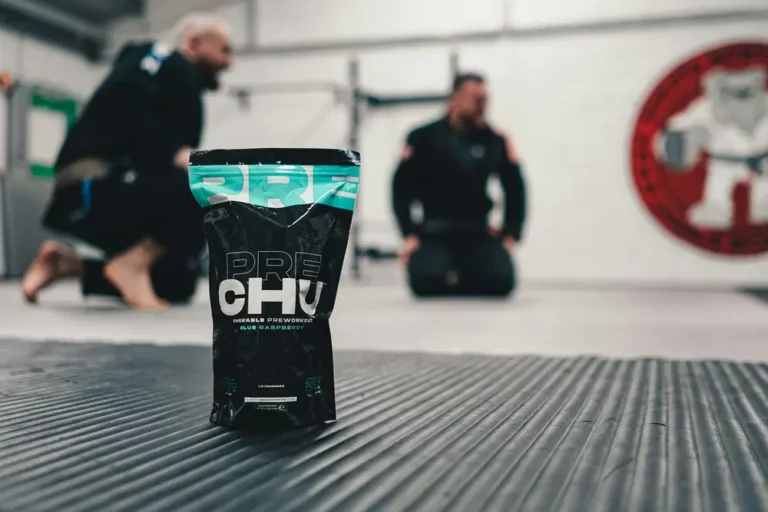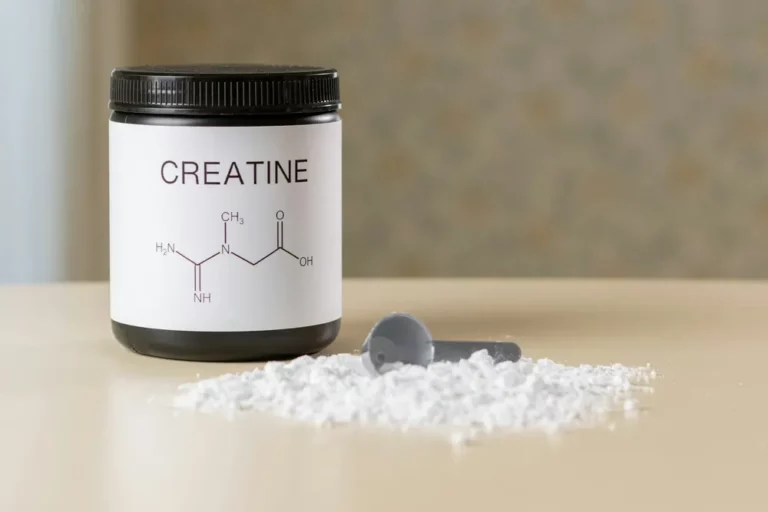Is Taking Creatine on an Empty Stomach Safe? Dosage & Timing Tips
I’ve always been curious about the best way to take creatine, especially since it’s such a popular supplement among fitness enthusiasts like myself. One question that pops up frequently is whether it’s okay to take creatine on an empty stomach. It’s a valid concern, given how sensitive our digestive systems can be and how we all want to get the most out of our supplements.
From my experience and a bit of digging into the topic, I’ve found that taking creatine on an empty stomach is safe for most people, but it’s not without its drawbacks. Some folks might experience discomfort, while others swear by it for convenience and routine. Let’s dive deeper into this topic and see if we can’t clear up some of the confusion.
Overview of Creatine Supplementation
When I first considered incorporating creatine into my fitness routine, I was met with a barrage of information. It took a bit of digging and personal experience to truly understand the impact of this popular supplement. In this section, I’m breaking down what I’ve learned about creatine supplementation, including its benefits and the various forms available on the market.
My journey with creatine began with an interest in boosting my athletic performance and encouraging muscle growth. Here are key benefits I discovered:
- Increased Strength: Studies show that creatine supplementation can lead to significant increases in strength and power output during high-intensity activities. This was a game-changer for my weightlifting sessions.
- Improved Muscle Recovery: I noticed that with creatine, my recovery times improved. This echoes research findings that creatine can reduce muscle cell damage and inflammation following exhaustive exercise.
- Enhanced Muscle Mass: Regular creatine use, combined with resistance training, has been linked to increased muscle mass. My experience aligns with this as I observed noticeable gains.
- Boosted Brain Function: A surprising benefit for me was how creatine also seemed to aid my cognitive functions, especially in tasks that required quick thinking or problem-solving.
Different Forms of Creatine and Their Characteristics
As I delved deeper into the world of creatine, I realized it wasn’t a one-size-fits-all kind of supplement. Here are the main forms I encountered:
- Creatine Monohydrate: This is the most researched and widely used form of creatine. It’s affordable and has a proven track record for safety and effectiveness. Two scoops of Blonyx, for instance, provide exactly 5 g of creatine monohydrate.
- Creatine Ethyl Ester: Marketed as a more absorbable form of creatine, it supposedly requires smaller doses. However, my research led me to find mixed evidence regarding its superiority over monohydrate.
- Buffered Creatine: This form claims to reduce the potential for stomach discomfort, which some experience with monohydrate. Although the theory sounded appealing, the scientific backing was less convincing to me.
- Creatine Hydrochloride (HCl): Said to be more soluble in water, which suggests better absorption. My trial with Creatine HCl was positive, but I didn’t notice a dramatic difference from monohydrate.
Embarking on a creatine supplementation journey opened up a world of benefits and choices. Whether it was enhancing my performance in the gym or improving my recovery times, creatine proved to be a valuable addition to my routine. Each form comes with its own set of characteristics and purported benefits, but ultimately, my experiences taught me that personal preference and response play a huge role in finding the right type of creatine.
Taking Creatine on an Empty Stomach
When delving into the best practices for creatine supplementation, a common question pops up – is it beneficial to take creatine on an empty stomach? I’ve spent a considerable amount of time researching and experimenting with this to give you a well-rounded view.
Potential Advantages of Faster Absorption
One of the key reasons many opt to take creatine without eating first is the belief in faster absorption. The theory goes, without food to slow down the digestive process, creatine swiftly makes its way into the bloodstream and then into the muscles where it’s needed most. This could be particularly appealing for those looking to maximize their pre-workout routine. In essence, the quicker the creatine is absorbed, the sooner it can start working to enhance muscle energy stores and improve performance.
Risks of Gastrointestinal Distress and How to Mitigate Them
However, it’s not all smooth sailing. Taking creatine on an empty stomach can lead to gastrointestinal distress for some individuals. Symptoms can range from mild discomfort to more severe cramping or bloating. The reason lies in how creatine is metabolized and how it can draw water into the intestines, causing discomfort for some.
To mitigate these risks, I’ve found a few strategies that work well:
- Stay Hydrated: Drinking plenty of water when taking creatine is crucial. It not only helps with creatine absorption but can also reduce the likelihood of cramps or bloating.
- Start with a Lower Dose: If you’re new to taking creatine on an empty stomach, start with a lower dose than the recommended 5 grams to see how your body reacts. Gradually increasing the dose can help your body adapt without much distress.
- Listen to Your Body: Ultimately, each person’s body reacts differently to supplementation. If taking creatine on an empty stomach causes adverse effects, tweaking your routine could be the key. Whether it’s adjusting the timing or ensuring you have a small snack beforehand, finding what works best for you is important.
While there’s no one-size-fits-all answer to whether you should take creatine on an empty stomach, understanding both the potential benefits and risks is crucial. As always, experimenting and tuning into how your body responds will guide you toward the best approach for your supplementation needs.
Impact of Food on Creatine Absorption
When I first started exploring the world of supplements, the topic of taking creatine on an empty stomach vs. with food came up frequently. The more I dug into the research and anecdotal evidence, the clearer it became that what you eat alongside your creatine supplement can have a significant impact on its absorption and, consequently, its effectiveness.
How Carbohydrates and Proteins May Enhance Creatine Uptake
It’s fascinating to see how simple dietary changes can boost the benefits of creatine. Studies and expert opinions suggest that consuming carbohydrates and proteins along with creatine can significantly enhance its uptake by the muscles. This synergy seems to be related to how our bodies process these macronutrients.
Carbohydrates, especially those that cause a spike in blood sugar levels, seem to play a critical role here. When I consume creatine with a source of simple carbohydrates, such as juice or a sports drink, it appears that the resulting insulin spike helps shuttle creatine more efficiently into my muscle cells. The science suggests that this isn’t just a marginal increase; it can be quite substantial.
Similarly, adding protein to the mix can amplify this effect. Some proteins, particularly those rich in insulinogenic amino acids, can further stimulate insulin release. Combining creatine with a protein source, like whey, which is quickly digested and absorbed, seems to create an even more conducive environment for creatine uptake.
The Role of Insulin in Creatine Absorption
The common denominator for enhancing creatine absorption appears to be insulin, a hormone that plays a vital role in nutrient transport and muscle metabolism. The presence of insulin is crucial for driving creatine into muscle cells. This is why the timing and composition of my meals around creatine supplementation can make a difference.
When I underline the role of insulin, I’m looking at its ability to act as a sort of shuttle. After ingesting creatine with carbohydrates and proteins, the resulting insulin spike enhances the transport and retention of creatine within the muscles. This doesn’t just improve how much creatine is absorbed but potentially increases the effectiveness of the supplement, allowing for better performance gains and more efficient recovery from intense training sessions.
Personal Preferences and Tolerances
When it comes to supplementing with creatine, there’s no one-size-fits-all approach, especially regarding taking it on an empty stomach. In this section, we’ll delve deeper into the nuances of personal preferences and bodily tolerances that play a critical role in finding what works best for you.
Variability in Individual Responses to Creatine Timing
I’ve noticed that there’s a significant variability in how people respond to taking creatine at different times of the day, especially on an empty stomach. While some boast about heightened energy levels and improved workout performance when they consume creatine first thing in the morning, others may experience discomfort or negligible benefits. This variability can be attributed to differences in metabolism, digestive health, and even the body’s circadian rhythms.
It’s fascinating how our bodies can respond so differently to the same supplement, indicating that the metabolic processes involved in creatine absorption and utilization are complex and highly individualized. This leads to the realization that while scientific recommendations serve as a valuable starting point, they may need to be tailored to accommodate each person’s unique physiology.
Listening to Your Body and Adjusting Accordingly
Given the variability in responses, I’ve learned the importance of listening to my body when it comes to creatine supplementation. If taking creatine on an empty stomach causes you discomfort, such as bloating or nausea, it might be a sign to adjust your approach. On the flip side, if you’re someone who experiences an energy surge and enhanced focus for your workouts, it could be an indication that your body optimally utilizes creatine under these conditions.
The key is to start with small adjustments and monitor how your body reacts. It could mean altering the timing, such as taking creatine with a small snack if an entirely empty stomach doesn’t sit well with you or experimenting with different forms of creatine that may be gentler on your digestive system. Remember, the goal is to optimize the benefits you receive from creatine supplementation, aligning it with your body’s preferences and tolerances.
In doing so, you become attuned to your body’s signals and can make informed decisions that enhance your overall supplement strategy, ensuring you’re not just following a generic guideline but instead tailoring your creatine intake to what suits you best.
Practical Tips for Creatine Consumption
When it comes to incorporating creatine into my fitness regimen, I’ve learned a few practical tips over the years that have significantly enhanced my experience. These insights have allowed me to benefit from creatine while minimizing any potential side effects. Let’s dive into some guidelines and recommended practices.
Guidelines for Minimizing Side Effects When Taking Creatine
First off, understanding how to minimize side effects when taking creatine has been crucial for me. After all, nobody wants to deal with unnecessary discomfort. Through trial and error, I’ve discovered that starting with a lower dose and gradually increasing it allows my body to adjust without shock. Most research suggests a starting dose of around 5 grams per day, which aligns perfectly with what I’ve found works best for me.
Another key aspect is choosing the right type of creatine. With so many varieties on the market, it’s easy to get overwhelmed. However, creatine monohydrate has consistently shown to be both effective and well-tolerated in numerous studies. It’s what I stick to, and I’ve never felt the need to switch.
Monitoring my body’s response to creatine is also something I take seriously. If I notice any signs of discomfort or bloating, I adjust my intake accordingly. Listening to my body has always guided me toward the most beneficial way to supplement with creatine.
Recommended Practices for Hydration and Dosage
Hydration plays an invaluable role in my creatine consumption strategy. Creatine can increase water retention in the muscles, which, while beneficial for muscle synthesis, means I need to up my water game. I aim to drink at least 8-10 glasses of water a day when supplementing with creatine. Staying well-hydrated not only supports the creatine absorption process but also helps prevent any cramping or dehydration.
When it comes to dosage, sticking to the recommended daily dose is key for reaping the benefits without overdoing it. Based on the consensus from multiple studies and my own experience, maintaining a daily intake of 5 grams ensures effectiveness without the need for a loading phase. This makes supplementation simpler and more sustainable for my lifestyle.
Creatine Timing and Workout Performance
I’ve often pondered when to take creatine to reap its maximum benefits. After combing through various studies and expert opinions, the consensus seems a bit split. However, one critical piece of information stands out: taking creatine close to your workout time, either before or after, is often suggested for the best results.
The logic is pretty straightforward. Creatine’s primary role is to increase phosphocreatine stores in your muscles, thereby enhancing your energy during high-intensity activities. By timing its intake around your workouts, you essentially provide your muscles with an immediate supply of this energy-boosting compound.
But here’s the kicker. The exact timing within this pre-and post-workout window can vary based on individual responses. Some people might find a pre-workout creatine dose gives them an edge, while for others, post-workout supplementation aligns better with their body’s absorption rhythms.
Considerations for Pre- and Post-Workout Creatine Intake
When it comes to pre-workout consumption, the theory is that loading your muscles with creatine beforehand can increase your strength and endurance during the workout. It’s like priming the engine before a race. However, it’s crucial not to take it too close to exercise if it’s on an empty stomach, as this might lead to discomfort for some.
On the flip side, post-workout creatine intake has its own set of advocates. The argument here is that your muscles are like sponges after a workout, ready to soak up nutrients during the recovery phase. Adding creatine to your post-workout nutrition might enhance recovery and muscle growth by replenishing creatine stores when your muscles are most receptive.
Yet, it’s not just about timing. Both scenarios underscore the importance of pairing creatine with a source of carbohydrates or protein to enhance its absorption. Whether it’s a banana before hitting the gym or a protein shake afterward, what you pair with your creatine can make a significant difference.
Debunking Myths Around Creatine
Throughout my journey exploring the world of supplements, I’ve come across numerous myths surrounding creatine. Especially when it comes to taking creatine on an empty stomach, the misconceptions seem endless. Let’s dive into some of these myths and shed light on the truths.
Addressing Common Misconceptions and Fears
One of the most prevalent myths I’ve encountered is the belief that creatine must be taken with a hefty meal to avoid stomach issues. While it’s true that some people might experience mild discomfort when taking creatine on an empty stomach, for many, this isn’t the case at all. It’s vital to remember that everyone’s body reacts differently, and what works for one person may not work for another.
Fear often stems from misinformation. For instance, concerns about creatine causing kidney problems or dehydration are widespread. However, these fears are largely unfounded for healthy individuals. It’s essential to differentiate between exceptional cases and the typical, safe use of creatine. Hydration is crucial when supplementing with creatine, not because of an inherent risk of dehydration but because all cellular processes function optimally when the body is well-hydrated.
Another common myth is that taking creatine without food lessens its effectiveness. This couldn’t be further from the truth. The effectiveness of creatine doesn’t hinge on whether it’s consumed with food but rather on its consistency of use and proper dosing.
Evidence-Based Insights on Creatine Safety and Efficacy
Key Point: Creatine is one of the most researched supplements in the wellness industry, and the consensus among scientific studies is clear – creatine is safe and effective when used as directed.
Here’s some evidence that’s particularly reassuring:
- A study conducted by Ostojic and Ahmetovic in 2008 examined the gastrointestinal response to creatine supplementation. They found no significant dose-dependent side effects, debunking the myth that larger doses necessarily lead to more discomfort or issues.
- Research published by Ribeiro et al., in 2021, emphasizes the timing of creatine supplementation around exercise, suggesting no real concern over immediate pre- or post-workout consumption. This supports the idea that taking creatine on an empty stomach, such as before breakfast or between meals, could still be beneficial for workout performance.
Lastly, it’s important to highlight that creatine’s benefits extend beyond muscle strength and size. Studies, including those reviewed in Cribb and Hayes’ 2006 research, show improvements in resistance exercise performance and skeletal muscle hypertrophy, irrespective of the timing of ingestion relative to meals.
Consistency in Creatine Supplementation
When delving into the world of creatine, especially with the debate around taking it on an empty stomach, one aspect that often gets overshadowed is the fundamental importance of consistency. It’s not just about when or how you take it but also about ensuring you’re disciplined in your daily intake.
The Importance of Regular Daily Intake
I’ve learned, through both research and personal experience, that the secret sauce to maximizing the benefits of creatine is regular, consistent daily intake. St. Francis Xavier University in Nova Scotia has highlighted that large doses, such as 10-20 g, lead to much of the creatine being excreted without being used by the body. The sweet spot, according to most research, lies at a modest 5 g per day. This consistency helps maintain a sufficient level of creatine phosphate in the muscles, ensuring you’re primed and ready for your workouts, irrespective of your meal timing.
The myth about the necessity of a loading phase has been largely debunked. Easing into a routine with a consistent daily dosage not only prevents wastage but also supports better absorption and utilization by the body. I’ve seen the impact firsthand—smoother energy ramps, improved strength, and no bloating.
Long-Term Use and Potential Needs for Cycling
One of the intriguing elements of creatine supplementation is the debate around long-term use and whether there’s a need to cycle on and off it. From conversations with health professionals and my own journey, I’ve come to understand that the necessity of cycling creatine is more myth than fact. The notion likely stems from the cycling associated with other supplements and anabolic steroids, creating a cloud of confusion around creatine.
However, scientific consensus suggests that due to creatine’s safety profile, long-term supplementation does not necessitate cycling. The body’s own production of creatine doesn’t dramatically cease, nor does the efficacy of supplementation diminish over time. That said, it’s crucial to listen to your body. If you’re feeling off or experiencing any discomfort, reconsidering your intake might be wise. I make it a point to stay mindful of how my body reacts to supplementation over extended periods and adjust accordingly, always prioritizing my health and well-being over strict adherence to any regimen.
Conclusion
Taking creatine on an empty stomach isn’t the make or break it’s often made out to be. What really matters is that you’re consistent with your intake and listen to your body along the way. Remember, a steady 5g daily does the trick without the need for a loading phase or cycling. It’s all about keeping it simple and focusing on what works best for you. After all, our bodies are unique and deserve a personalized approach to supplementation. Here’s to making the most out of your creatine routine and achieving those fitness goals with health and well-being at the forefront!
FAQ – Frequently Asked Questions
Is consistency important in creatine supplementation?
Yes, consistent daily intake of creatine is crucial for optimal results rather than focusing on specific timing or meal consumption.
Do I need a loading phase with creatine?
No, the myth of a loading phase has been debunked. Gradual intake is advised for improved energy levels and strength.
Is it necessary to cycle on and off creatine?
There is no need to cycle creatine due to its safety profile and sustained efficacy over long-term use.







